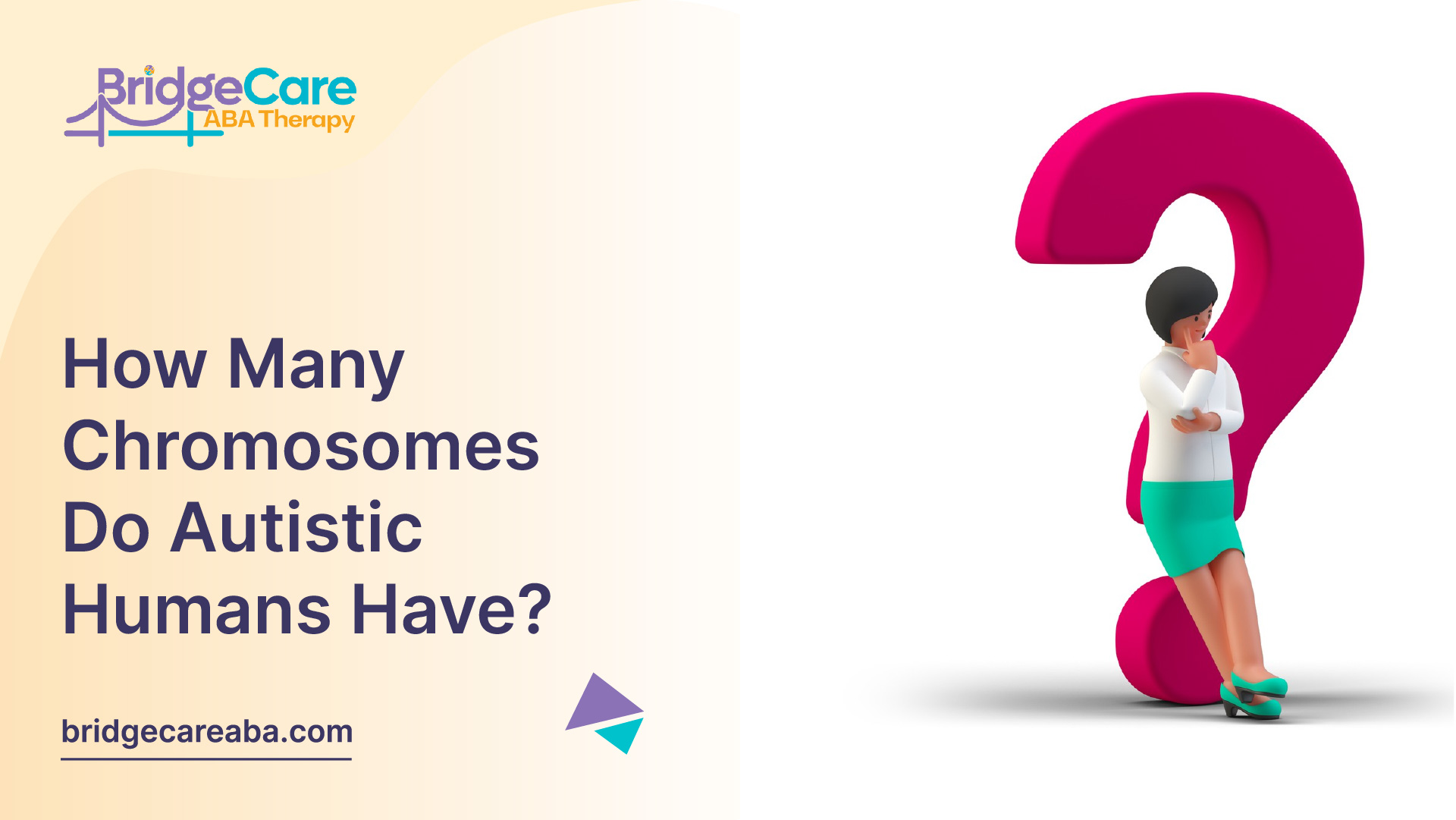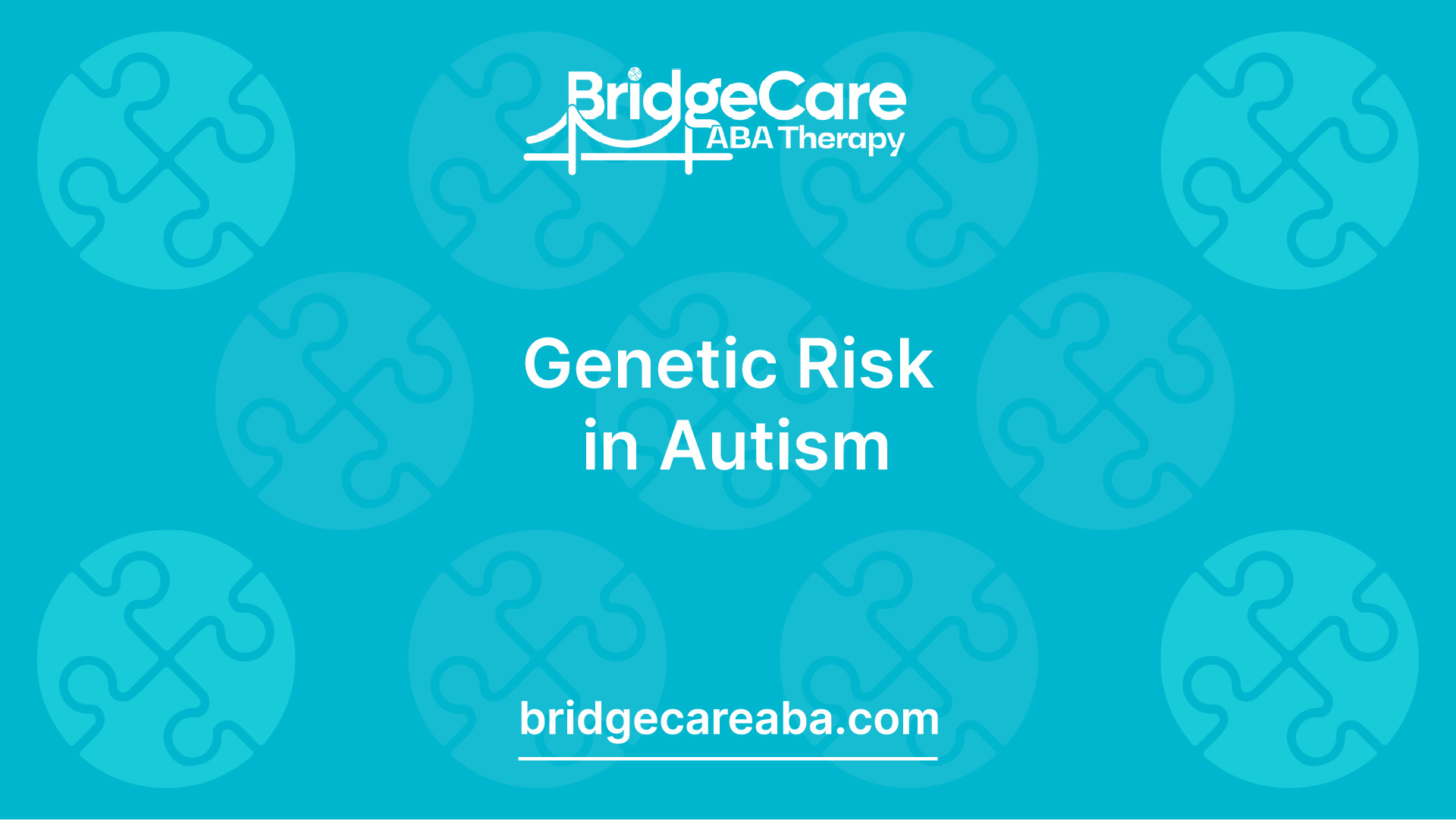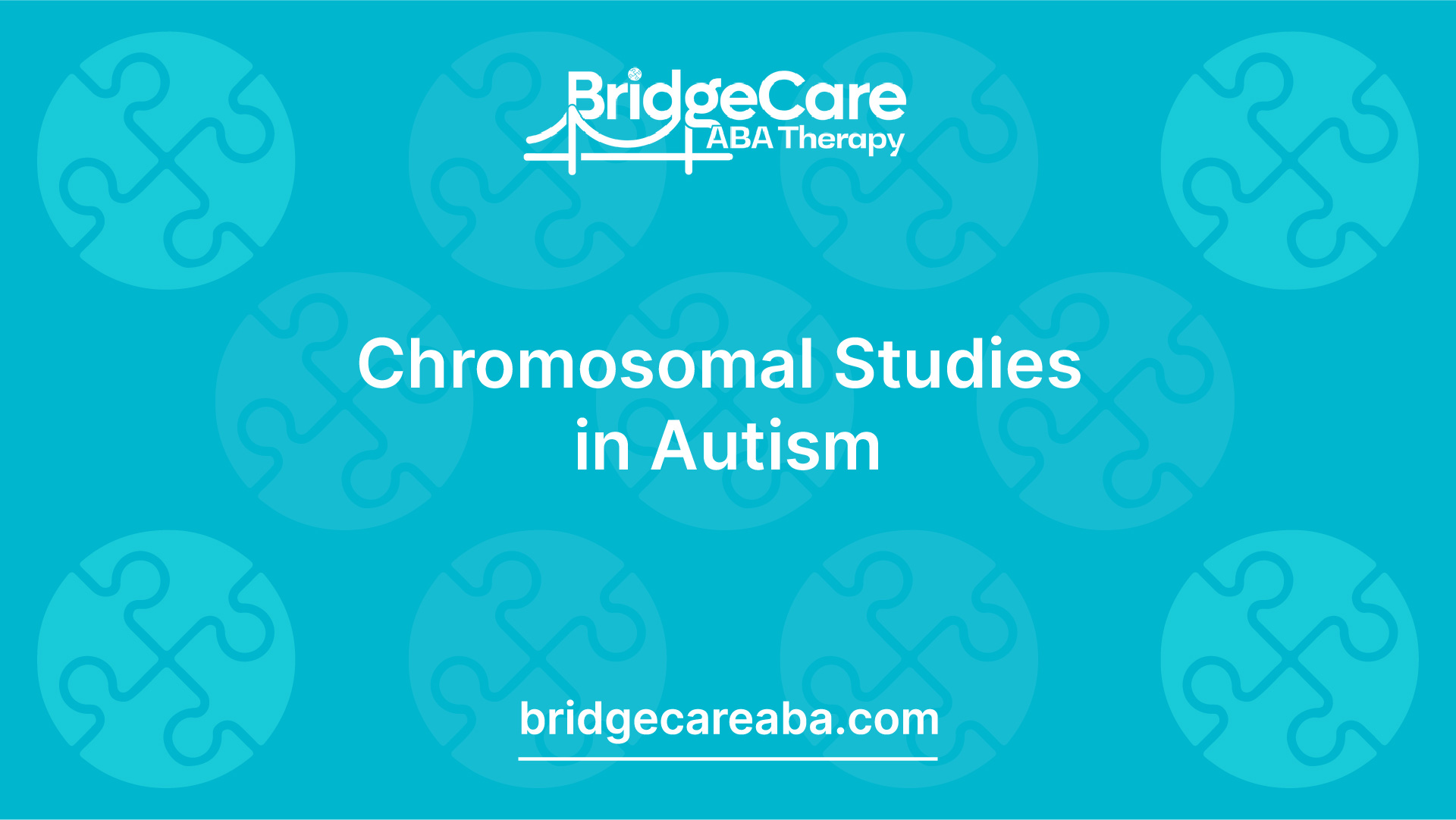How Many Chromosomes Do Autistic Humans Have?
Unveiling the mystery: How many chromosomes do autistic humans have? Explore the genetic and environmental factors contributing to autism.
How Many Chromosomes Do Autistic Humans Have?
Unveiling the mystery: How many chromosomes do autistic humans have? Explore the genetic and environmental factors contributing to autism.
Chromosomes in Autistic Humans

When it comes to the number of chromosomes, autistic humans typically have the same as non-autistic individuals. Each human cell contains 46 chromosomes in total, organized into 23 pairs. These pairs consist of 22 pairs of autosomes, which look the same in both males and females, and one pair of sex chromosomes that differ between males and females. The sex chromosomes determine an individual's biological sex, with females having two X chromosomes (XX) and males having one X and one Y chromosome.
Chromosome Basics
Autistic humans, like all humans, have 22 pairs of numbered chromosomes called autosomes and one pair of sex chromosomes (XX or XY), totaling 46 chromosomes in each cell of the body. Each chromosome pair contains two chromosomes, one inherited from each parent. These chromosomes carry genetic information that determines various traits and characteristics of an individual. Changes or alterations in the structure or number of chromosomes can lead to chromosomal abnormalities.
Chromosomal Abnormalities
While most autistic individuals have the usual number and structure of chromosomes, some may have chromosomal abnormalities. Cytogenetically visible chromosomal abnormalities have been found in approximately 7.4% of autistic patients, along with several submicroscopic variants. However, it's important to note that a study conducted on 30 autistic patients found no detectable numerical or structural chromosomal abnormalities in their cytogenetic analyses.
Chromosomal studies are consistently reported to have high diagnostic yields in individuals with Autism Spectrum Disorders (ASDs), with success rates for identifying a specific diagnosis ranging from 6% to 15%. Certain chromosomal regions, such as the 15q pericentromeric region, 17p11, 22q11, 22q13, and 2q37, have been frequently associated with abnormalities in individuals with ASDs [4]. Notably, changes in the 16p11.2 region have been reported to occur at a significantly high frequency in patients with ASDs, making it a "hot spot of genetic instability".
Understanding the basic structure and abnormalities of chromosomes is essential in unraveling the genetic factors associated with Autism Spectrum Disorders. By studying chromosomal regions and identifying potential genetic changes, researchers aim to gain insight into the underlying mechanisms and causes of autism.
Genetic Factors in Autism

When it comes to understanding the factors contributing to Autism Spectrum Disorder (ASD), genetic factors play a significant role. It is estimated that genetic factors contribute between 40 to 80 percent of the risk of developing ASD. Changes in over 1,000 genes have been associated with ASD, and common gene variations can affect the risk of developing the condition. However, it's important to note that not all individuals with these gene variations will be affected, and most gene variations have only a small effect on ASD risk.
Genetic Risk in Autism
Autism is highly heritable, with at least 50% of the genetic risk predicted by common genetic variations. Another 15-20% of the risk is due to spontaneous mutations or predictable inheritance patterns. However, the remaining genetic risk factors are still being investigated.
In about 2 to 4 percent of individuals with ASD, rare gene mutations or chromosome abnormalities are thought to be the cause of the condition. These mutations often occur as features of syndromes that involve additional signs and symptoms affecting various parts of the body. For example, mutations in genes like ADNP, ARID1B, ASH1L, CHD2, CHD8, DYRK1A, POGZ, SHANK3, and SYNGAP1 have been associated with ASD. It's important to note that most individuals with ASD caused by rare gene mutations have mutations occurring in only a single gene.
Researchers have also identified specific genes that may increase the risk of autism. These include PLEKHA8, PRR25, FBXL13, VPS54, SLFN5, SNCAIP, and TGM1. These genes are supported by rare inherited DNA variations transmitted from parents to children with autism.
Gene Associated with Autism
- PLEKHA8: Yes
- PRR25: Yes
- FBXL13: Yes
- VPS54: Yes
- SLFN5: Yes
- SNCAIP: Yes
- TGM1: Yes
Table sourced from UCLA Health
Rare Gene Mutations
Rare loss-of-function (LoF) variants in autism-associated genes have been observed in individuals with autism. These variants occur in 4% of individuals with autism, 1.13% of their siblings and parents, and 0.58% of individuals from the UK Biobank. It's worth noting that these variants may have sub-diagnostic effects in individuals with autism and could also be linked to small but significant effects on cognitive performance and socioeconomic status among the general population.
In the SPARK autism study, it was found that up to 10% of individuals had a variation in an autism gene, with most of these variations being de novo. De novo variations are often not inherited from parents and have been found to play a significant role in autism.
Understanding the genetic factors in autism is a complex field of study. While genetic variations and rare gene mutations contribute to the risk of developing ASD, it's important to note that every individual is unique, and the interplay between genetics and other factors is still being explored. Ongoing research continues to shed light on the intricate genetic landscape of autism.
Prevalence and Diagnosis
Understanding the prevalence and diagnosis of autism is crucial for identifying and supporting individuals with this neurodevelopmental disorder. This section explores the prevalence of autism and the diagnostic tools used in its assessment.
Prevalence of Autism
The prevalence of Autism Spectrum Disorder (ASD) has been on the rise in recent years. In the United States, the estimated prevalence of ASD was 1 in 44 children in 2021, which is a significant increase from the reported prevalence of 1 in 2,000 in the 1980s. This increase may be attributed to changes in diagnostic criteria and a better understanding of the disorder.
Studies have shown that the prevalence of autism spectrum disorders varies across populations. For example, a study estimated the prevalence at 6 per 1000 in a population of school children in 2005. However, more recent studies have estimated the prevalence to be as high as one child in 38. This increase is likely attributed to changes in diagnostic criteria and increased awareness and screening for ASDs.
Diagnostic Tools
Diagnosing autism involves a comprehensive evaluation that considers various factors, including behavioral observations, medical history, and genetic testing. Chromosomal studies have been consistently reported to have one of the highest diagnostic yields in individuals with ASDs. These studies have demonstrated a success rate of identifying a specific diagnosis in persons with autism ranging from 6% to 15% [4].
Array Comparative Genomic Hybridization (aCGH) has emerged as a powerful tool in diagnosing ASDs. It has been found to have a diagnostic yield of 27.5% in patients with "syndromic" autism. This technique allows for the detection of potentially significant deletions and duplications associated with autism, providing valuable insights into the genetic underpinnings of the disorder.
In addition to genetic testing, a thorough clinical genetics evaluation can provide positive answers in up to 40% of individuals with ASDs. This evaluation utilizes current knowledge and technology to assess various genetic factors that may contribute to the development of autism.
Diagnostic tools for autism continue to evolve as researchers gain a better understanding of the disorder. These tools aim to improve early detection and intervention, leading to better outcomes for individuals with autism. By utilizing a combination of behavioral observations and genetic testing, healthcare professionals can accurately diagnose autism and provide appropriate support and interventions for individuals with this condition.
Explore our articles for a more captivating read on Extinction Burst ABA, Discrete Trial Training Examples, Autism vs BPD, and Joint Attention Autism.
Immune System and Autism
Research suggests that there are certain immune changes and epigenetic dysregulation associated with autism. These findings contribute to our understanding of the complex nature of autism and its potential underlying causes.
Immune Changes
Evidence supports the hypothesis of immune changes in autism, with abnormalities observed in both the peripheral immune system and the brain of individuals with Autism Spectrum Disorder (ASD). Studies have shown differences in transcriptome organization between autistic and normal brains, as well as microglial and astroglial activation in the brains of individuals with ASD. These findings suggest that immune dysfunction may play a role in the development and manifestation of autism.
Epigenetic Dysregulation
In addition to immune changes, epigenetic dysregulation is also believed to be involved in autism. Epigenetics refers to changes in gene expression that occur without altering the DNA sequence itself. Epigenetic modifications can influence how genes are activated or silenced, potentially affecting various biological processes.
The relationship between epigenetics and autism is an area of active research. It is believed that epigenetic alterations can impact brain development and function, contributing to the symptoms of autism. Further studies are needed to fully understand the specific epigenetic mechanisms involved in autism.
Understanding the immune changes and epigenetic dysregulation associated with autism provides important insights into the underlying biology of the disorder. However, it is essential to note that autism is a complex and multifactorial condition, and these factors alone do not fully explain its development. Further research is needed to unravel the intricate interplay between genetic, environmental, and neurological factors that contribute to autism.
For more information on autism, including genetic factors and prevalence, refer to the respective sections in this article.
Chromosomal Studies in Autism

Understanding the role of chromosomes in autism is a key area of research. Chromosomal studies have provided valuable insights into the genetic factors contributing to the disorder. In this section, we will explore the diagnostic yields and specific chromosomal regions associated with autism.
Diagnostic Yields
Chromosomal studies are consistently reported as yielding high diagnostic rates in individuals with Autism Spectrum Disorders (ASDs). These studies have the potential to identify specific genetic abnormalities that may contribute to the development of autism. The reported success rate of identifying a specific diagnosis in individuals with autism ranges from 6% to 15%.
Array comparative genomic hybridization (aCGH) has emerged as a powerful tool in diagnosing ASDs. One study found a diagnostic yield of 27.5% when using aCGH to study patients with "syndromic" autism. Furthermore, a thorough clinical genetics evaluation using current knowledge and technology can result in positive findings in up to 40% of individuals with ASDs. This highlights the importance of chromosomal studies in understanding the genetic underpinnings of autism.
Chromosomal Regions
Numerous chromosomal regions have been implicated in association with Autism Spectrum Disorders. Deletions and duplications in these regions have been reported to occur at varying frequencies in individuals with ASDs. Some of the most frequently reported regions with abnormalities associated with ASDs include:
- 15q pericentromeric region
- 17p11
- 22q11
- 22q13
- 2q37
These regions have shown associations with an autism phenotype and are considered to be of significant interest in understanding the genetic basis of autism. Additionally, changes in the 16p11.2 region have been reported to occur at a significantly high frequency in individuals with ASDs, indicating it as a "hot spot of genetic instability".
Chromosomal microarray analysis has also contributed to the identification of genetic abnormalities associated with autism. Deletions or duplications of chromosome regions such as 15q on chromosome 15 and 16p on chromosome 16 have been detected in approximately 1% of autistic children using this technique.
In the most comprehensive clinical study to date, potentially significant deletions and duplications were detected in 18% of the 933 patients tested for autism. Approximately 7% of these abnormalities were clearly associated with the disease, representing a substantial improvement over traditional karyotyping.
The findings from chromosomal studies in autism provide valuable insights into the genetic factors contributing to the disorder. By identifying specific chromosomal regions and genetic abnormalities associated with ASDs, researchers can further unravel the complex genetic architecture of autism.
Environmental Factors
While genetic factors play a significant role in autism, environmental factors also contribute to the development of the condition. Understanding these environmental influences is crucial for a comprehensive understanding of autism. Two key environmental factors that have been implicated in autism are prenatal exposure and perinatal/neonatal factors.
Prenatal Exposure
Exposure to certain substances during pregnancy has been associated with an increased risk of autism in children. One notable example is prenatal exposure to valproate, a medication used to treat conditions such as epilepsy and bipolar disorder. Research has shown that children exposed to valproate in utero have an 8-fold increased risk of developing autism spectrum disorder (ASD), particularly when exposure occurs during the first trimester of pregnancy. It is important for expectant mothers to consult with their healthcare providers regarding the potential risks and benefits of medications during pregnancy.
Perinatal and Neonatal Factors
The perinatal and neonatal period, which encompasses the time from late pregnancy to the first few weeks after birth, has also been associated with autism risk. A recent meta-analysis identified several potential risk factors during this critical period. These factors include fetal presentation, umbilical-cord complications, fetal distress, birth injury or trauma, multiple births, maternal hemorrhage, and low birth weight, among others.
These perinatal and neonatal factors are believed to contribute to the risk of autism, although the mechanisms by which they do so are not yet fully understood. Further research is needed to elucidate the specific pathways through which these factors interact with genetic and other environmental influences to increase the likelihood of autism development.
It's important to note that while these environmental factors have been associated with an increased risk of autism, they do not account for all cases. Autism is a complex condition with multifactorial causes, and individual differences in susceptibility to environmental factors exist. Ongoing research aims to uncover additional environmental risk factors and their interactions with genetic factors in the development of autism.
To learn more about the prevalence of autism and the diagnostic tools used, refer to the sections on prevalence of autism and diagnostic tools.







